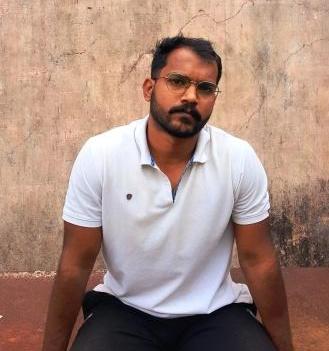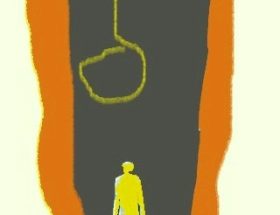Suraj Jadhav
Dr. Thol. Thirumavalavan recently distributed translated copies of Manu Smriti in Tamil Nadu and explained why it should be burned. Dr. Ambedkar burned the Manu Smriti in 1927. Rajasthan High Court has a statue of Manu in its premises. On the issue of Manu Smriti, there are only two types of people: those who oppose it and are willing to burn it at any cost and those who support it openly or covertly. Those who say they believe in parts of it rather than the whole are too from the second type.
Okay, it’s a centuries-old draconian text that deserves to be burned. It was a rule book of its own time and not relevant now. So what was a ‘law’ first became derogatory over time because its base was inhuman. Now we have a modern version of Manusmriti, nearly a century and a half old, that is equally inhumane and draconian. It was written under previous rulers, has subjugated crores of people, and still does so. What’s more, you can’t even burn it because it is state-sponsored!
The ability of caste to adopt everything in its way is tremendous. It also dominates who represents history and how it’s narrated. While there is an abundance of historical texts prior to the fall of significant empires in India and the mutiny of 1857, the period of Indian history from the 1820s till the early 1850s has scarce documentation except that of Mahatma Phule. This period actually represents the culmination of the idea of an independent India. Numerous small tribes and nomadic groups presented stiff opposition to the British during this period, while mainstream historians glorified Mangal Pandey, paradoxically. Unlike the East India Company, the British Empire took offenses by these small groups pretty seriously.
And the Criminal Tribes Act (CTA) of 1871 was born.
Why do some communities emerge as heroic due to their part in the struggle for independence of India while some bestowed with the lifelong status of criminals? The basic assumption on which CTA was implemented was caste. It was observed that people born in respective castes are continuing the same task, so being a criminal is caste itself. The Act itself occurred because it was difficult for them to keep track of these groups. So sedentary societies, who had defined roles in traditional villages, pitched in. Any community can be nominated based on the report of the local head of the village. So these communities became new castes. These communities were involved in war-related livelihoods, entertainment (involving animals as well) and were small-time traders of daily necessities, etc. Currently, we can observe the attempt at re-Sanskritisation of these communities.
Nomadic and de-notified groups are closely experiencing the conflict of religion and culture for political gains. These communities are becoming politically conscious. But the reason for this realized consciousness is debatable. Their experience of over a century of the criminal justice system taught them that political power overrides any other authority. A few academic writings have poured immense narration and critical discourse into this Act. Though due to its inaccessibility, it’s still unknown. The question of untouchability and de-notified tribes are complex and differ on certain grounds. Some de-notified groups observed untouchability despite their vulnerable position on the ladder. While in spite of their untouchability, Dalit neighbourhoods near their setttlements helped them understand power structures in a better way and when the opportunity was given, they were able to capitalize on that. In spite of close association with other marginalized groups in the traditional village system, nomadic and de-notified communities failed to adopt the same coping strategies to uplift themselves. It did happen to a little extent but mostly in individual pockets. Lack of residential proof, permanent livelihood, and surveillance makes it difficult to obtain government identity proof. Which, in turn, takes them away from the state interventions envisioned to help them in development processes.
This Act turned the life of these groups into a vicious cycle of social exclusion. The Act kept on being updated till independence. There were barbed wire colonies of thousands of these communities cramped for space, sanitation, and whatnot—slow-killing concentration camps. We locked the ones who carried globalization on their shoulders for centuries. One can also read about these kinds of camps during the Mizoram state struggle. We are still talking about pre-independence era when the British ruled, and Criminal Tribes Act was still relevant to them. What happened next is we got independence in 1947, and we celebrated. British left India; we formed our constitution. The most revered document changed the lives of millions of oppressed. It has values of fraternity, fundamental rights, a separate schedule for tribal states etc. It was a tight slap on thousand years of rule of Manu.
Then we experienced the first general election of independent India, which established us as the largest democracy in the world (which is still considered as fake given millions of illiterates during that time). Governments were established, projects undertaken. But wait, something is missing. Groups under Criminal Tribes Act were still behind barbed wire. We just totally forgot about it.
What’s their fault? They resisted the British rule in their own capacity? Were they resented by sedentary societies because of their nomadic nature? Traditional village systems had no permanent roles and residences for them?
“At the stroke of the midnight hour, when the world sleeps, India will awake to life and freedom. A moment comes, which comes but rarely in history, when we step out from the old to new, when an age ends, and when the soul of a nation, long suppressed, finds utterance..,” loads of crap for the one on the other side of barbed wire.
Somewhere down the line, this injustice was realized, and the ceremony of cutting the barbed wire was done then by then India’s prime minister. But by then, we were already set in our own ways. States were formed, laws implemented, elections happened, and amendments were not an easy thing to do. Let states decide what to do with these respective groups. Once a criminal, always a criminal. Most of them rejuvenated the Criminal Tribes Act of 1871 by replacing it with Habitual Offenders Act (HOA). Criminal Tribes became De-notified Tribes. This time it was not decided one central agency but by respective state agencies. It is the Indian version of CTA. Except for a few clauses, nothing has changed. Police academies still follow the same manual, as inheritors of the surveillance state, passed on to them. A simple search on Google about Criminal Tribes Act and Habitual Offenders Act will give one a glimpse of the severity of human rights violations. They fall under different reservation categories in different states. From independence till 2017, there have been multiple commissions set up to review the situation of these communities, and they keep on confirming each other’s methodologies and findings one after the other.
The current state of de-notified tribes is not much different. It’s not a homogenous group. All came under the purview of the Criminal Tribes Act for different and almost petty reasons. They are routinely thrashed around in cities and villages on mere suspicion. Did someone mention the Atrocities act? Nope, not allowed. Why are some revered, and some are thrashed around for the same acts of rebellion? CASTE.
When some do it, its rebellion, while others do it, it’s an act of robbery. It’s modern Manu Smriti because it changed the course of life of these communities. It’s already 150 years old and still going strong. Given the time taken by the original Manu Smriti for its impact and influence to spread, Criminal Tribes Act is still modern. No one asks why the question of de-notified tribes finds its place in the constitution under the title of the Criminal Procedure chapter and is not found nowhere near the village border. Endorsed by law, the modern Manu Smriti still thrives.
~~~
Suraj Jadhav is currently a Ph.D. candidate in Social Work at Pondicherry University. He had earlier studied Masters of Social Work in TISS and has a Bachelor’s in Economics from Fergusson College, Pune.









